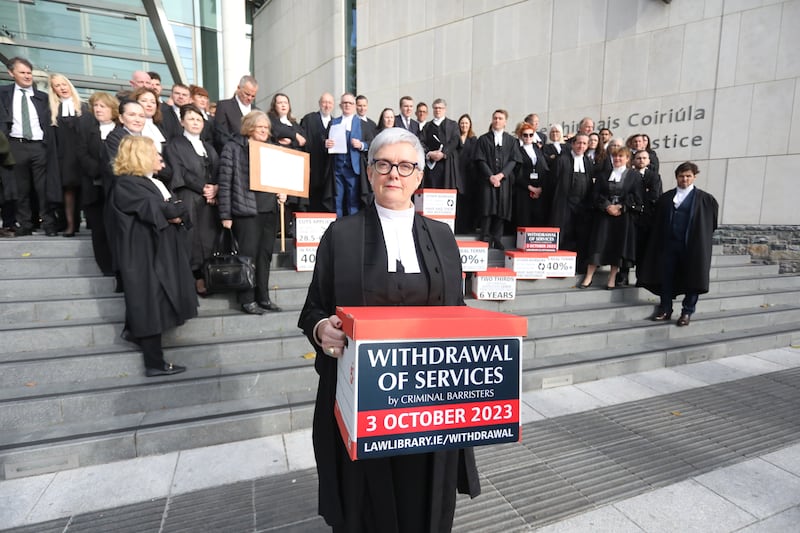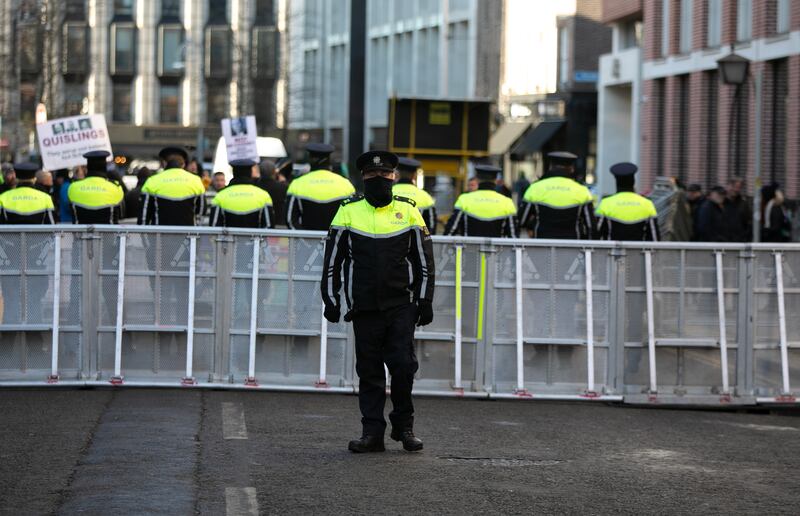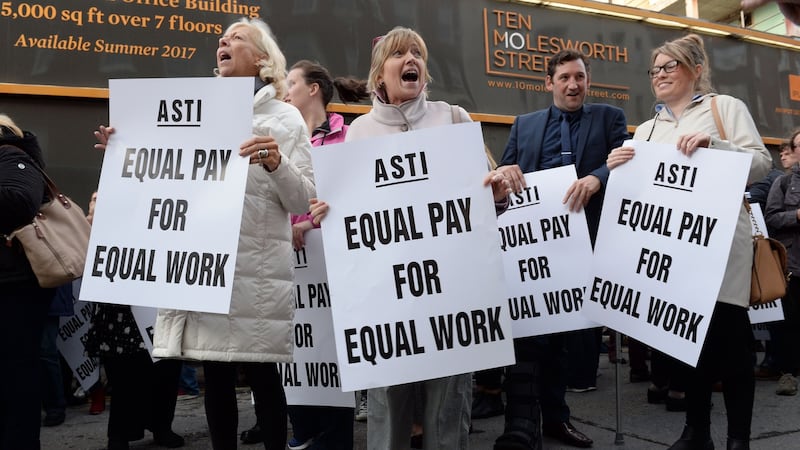It will be 15 years next month since then minister for finance Brian Lenihan said Ireland was “fighting for its economic future” and started to unveil cuts that unions argued would unfairly impact on their members.
The sense of injustice over the Financial Emergency Measures in the Public Interest (Fempi) Bill among civil and public service workers still lingers despite the most serious changes to pay and conditions having been undone at this stage.
Talks on a public sector pay deal remain paused at present, with some union leaders saying strikes are “likely” unless progress can be made.
When the unions sought in advance of the current talks process for the last of the Fempi legislation to be repealed, they were talking about provisions they say give the Department of Public Expenditure and Reform an effective veto on local bargaining outcomes on issues not covered by the national talks.
RM Block
Minister for Public Expenditure Paschal Donohoe agreed to this, arguing it was a gesture that should have given impetus to the talks. But he has also suggested that it did not make a great deal of difference. Someone, he effectively said, has to approve the money required for a local authority or other public sector employer to do a deal.
In terms of the cuts previously applied, those to pay were always intended to be temporary and have since been restored across the board in various stages, with the highest-earning public servants the most recent to have the process completed.
Changes to working hours, which the Government side did not intend to be temporary, have also been restored to most of those impacted, although they remain an issue for teachers. For the huge numbers of staff who took public sector jobs with the additional hours already in place, the restoration represented something of a bonus.
The broader post-Fempi landscape is a complex one, though, and new entrants have been hit in other ways.
One senior union official talks of hundreds of specific allowances, some available to very small numbers of people, having been cut but not restored. They concede, however, that most of what has not been undone would not be likely to keep people awake at night.
Holidays and sick pay were also standardised at the time, however, with the former impacting negatively on a significant number of employees while the latter hit just about everybody.
Critics, working in or competing to hire workers in the private sector regularly express scepticism about how tough those employed in the public sector really have it
It is hard to find anyone who believes the current pay talks will address of these issues, and so the increases agreed over the coming weeks, assuming a deal is reached, are liable to be judged on the simple percentages themselves in a way other recent ones could not be.
They will also have significant knock-on effects for the section 39 and other health and social care workers employed by charities or voluntary organisations. Their dispute over pay and a previous link to public sector increases was settled late last year with a commitment to address it over the course of the new public sector deal, currently envisaged to be 2½ years.

They will not be the only ones watching what pay rises are settled on with other groups. Barristers working within the criminal justice legal aid scheme argue that they fell badly behind because increases to their rates were uncoupled from the public sector pay deals. They recently secured a measure of restoration in the form of a 10 per cent increase on January 1st that addressed, they say, a cut imposed in 2011. But the Bar of Ireland told The Irish Times last week that it believes there should be further increases and wants the previous link re-established.
What gets talked about a lot in terms of the 385,000 or so directly employed civil and public servants, meanwhile, is the pensions issue.
There are several iterations of the public service pension scheme applying to people who started work pre-1995, pre-2004 or post 2013 when the current, single scheme came into effect.
The current scheme is not considered bad, but it is clearly not as good as what went before – and having members working side by side with different terms and conditions is always uncomfortable territory for unions.
[ Public sector pay: How did the State’s €2.9bn offer add up?Opens in new window ]
With a review for the Department of Expenditure and Reform suggesting in 2017 that the Government would need to contribute almost 30 per cent of salary to fund a pre-2013 pension, there are those in the unions who believe changes may well have been inevitable given the shifting private sector pensions landscape even if the financial crash had never happened.

Still there are specific practical issues. The Defence Forces, Garda, prison officers and fire fighters have what’s called a fast accrual scheme with their benefits building over 30 years rather than 40 because of mandatory retirement ages. But where retiring members used to get their entire pension when departing at, say, 55, they now have to wait until 66 to get the State pension element.
That leaves them facing the prospect of perhaps having to get by for a decade on the occupational element which, the Representative Association of Commissioned Officers (Raco) says, is a not a risk all are willing to take. Instead, they seek to leave in their 40s when they feel will more easily secure other jobs and have more time to develop second careers.
Raco argues that this aspect of the scheme needs to be re-examined as its general secretary, Conor King, believes it is having a real impact on retention.
It is these sorts of practical elements that the unions now point to at a time when so many sectors of the public service are short-staffed, struggling with recruitment.
Getting staff is clearly a huge issue for the Health Service Executive, at least when it is hiring, and far more nurses, for instance, now come from overseas each year than move into the system from training courses here.
The Irish Nurses’ and Midwives’ Organisation argues, though, that within that there are particular issues recruiting to Gaeltacht or island communities because of the Fempi-era loss of allowances specifically intended to make those areas more attractive to work in.
The union also says there are issues relating to the pay of newly qualified nurses while students working during their training are still paid less than they were before the crash.

Michael Gillespie, general secretary of the Teachers’ Union of Ireland also points to changes for new entrants that have never been undone and hours which have not been restored in the same way for those in classrooms.
In terms of addressing shortages, however, he suggests the more obvious factors at present are the pension issue and failure to properly recognise experience gained abroad. One, he says, is contributing to the departure of many young teachers to the Middle East or Australia while the other is making it harder to get them back again.
“The very thing that used to keep people in the job, the fear of walking away from the pension, isn’t much of a disincentive now. With the career average earnings scheme the loss of a couple of years’ service doesn’t seem like something to worry about… they are earning far more in Dubai.”
The experience they get away is then not recognised in the same way as if they had worked here, he argues, meaning “they come back with deposits for houses but then find they can’t borrow as much as somebody else because they are earning less when they get a job in a school here”.
Critics, working in or competing to hire workers in the private sector may, and regularly do, express scepticism about how tough those employed in the public sector really have it, but, says Gillespie, “if everyone is onto such a good thing why can’t the public sector fill the vacancies, why can’t we get all the extra teachers we need. That’s the proof of the pudding…”
Sign up for push alerts and have the best news, analysis and comment delivered directly to your phone
- Find The Irish Times on WhatsApp and stay up to date
- Our In The News podcast is now published daily – Find the latest episode here
















